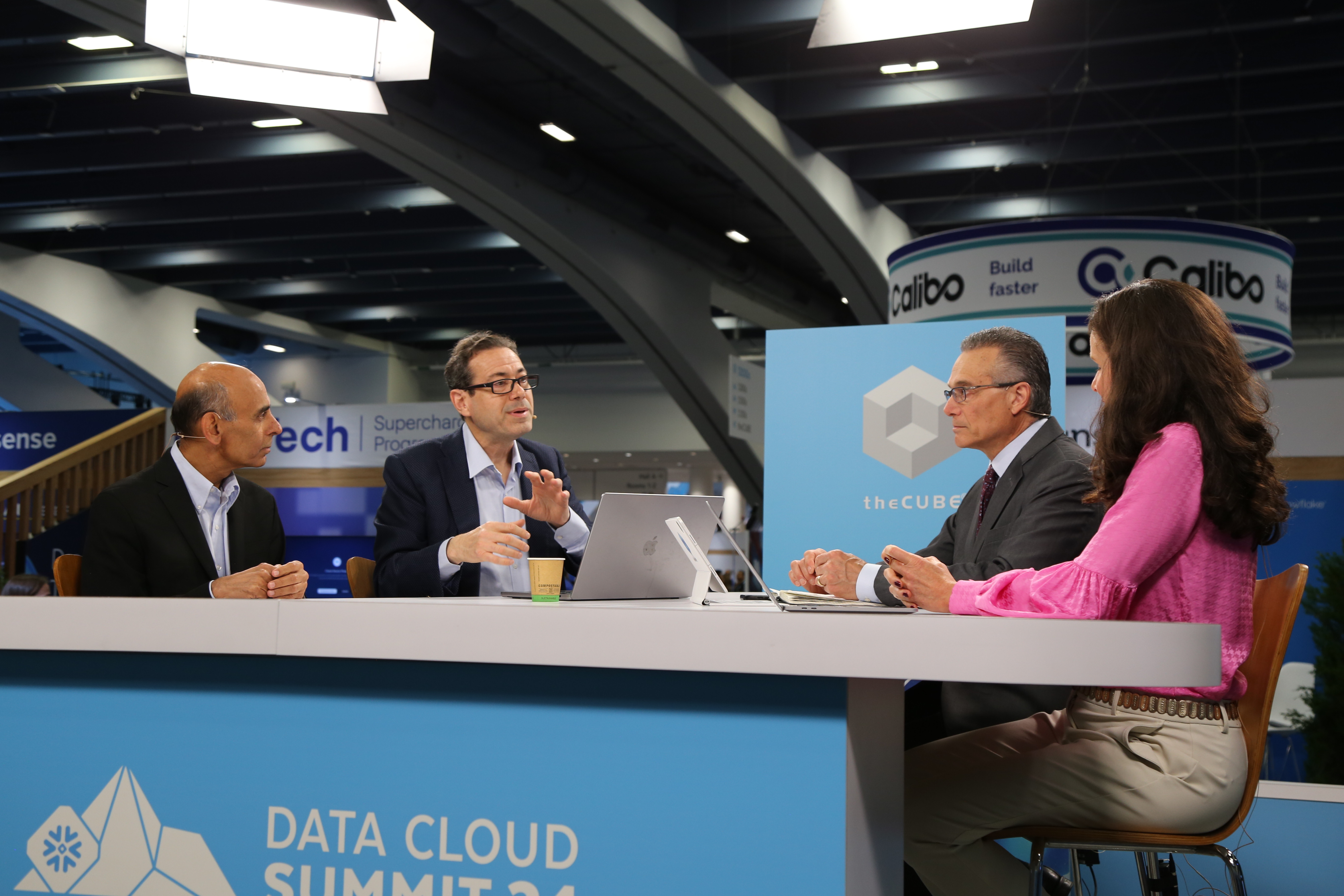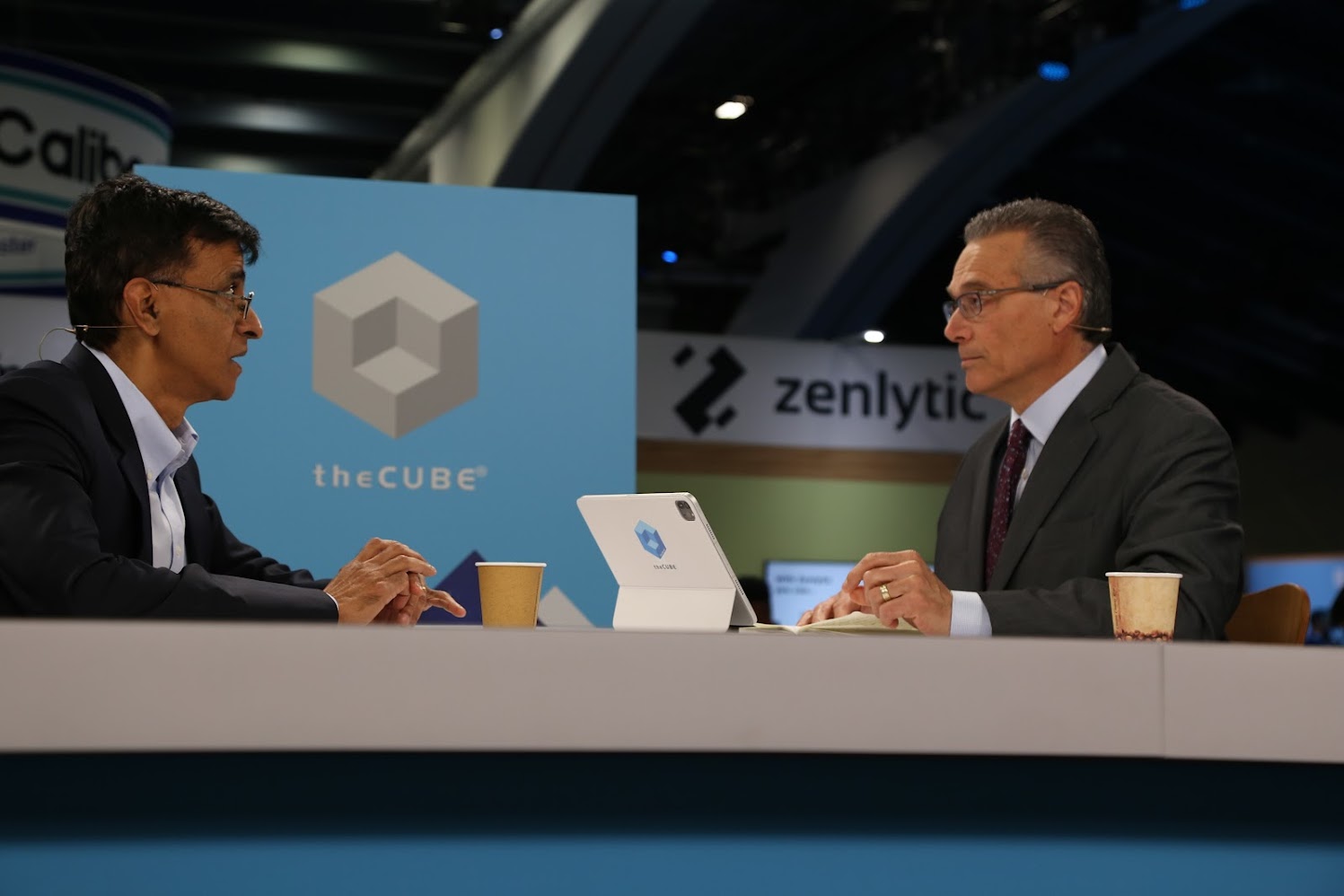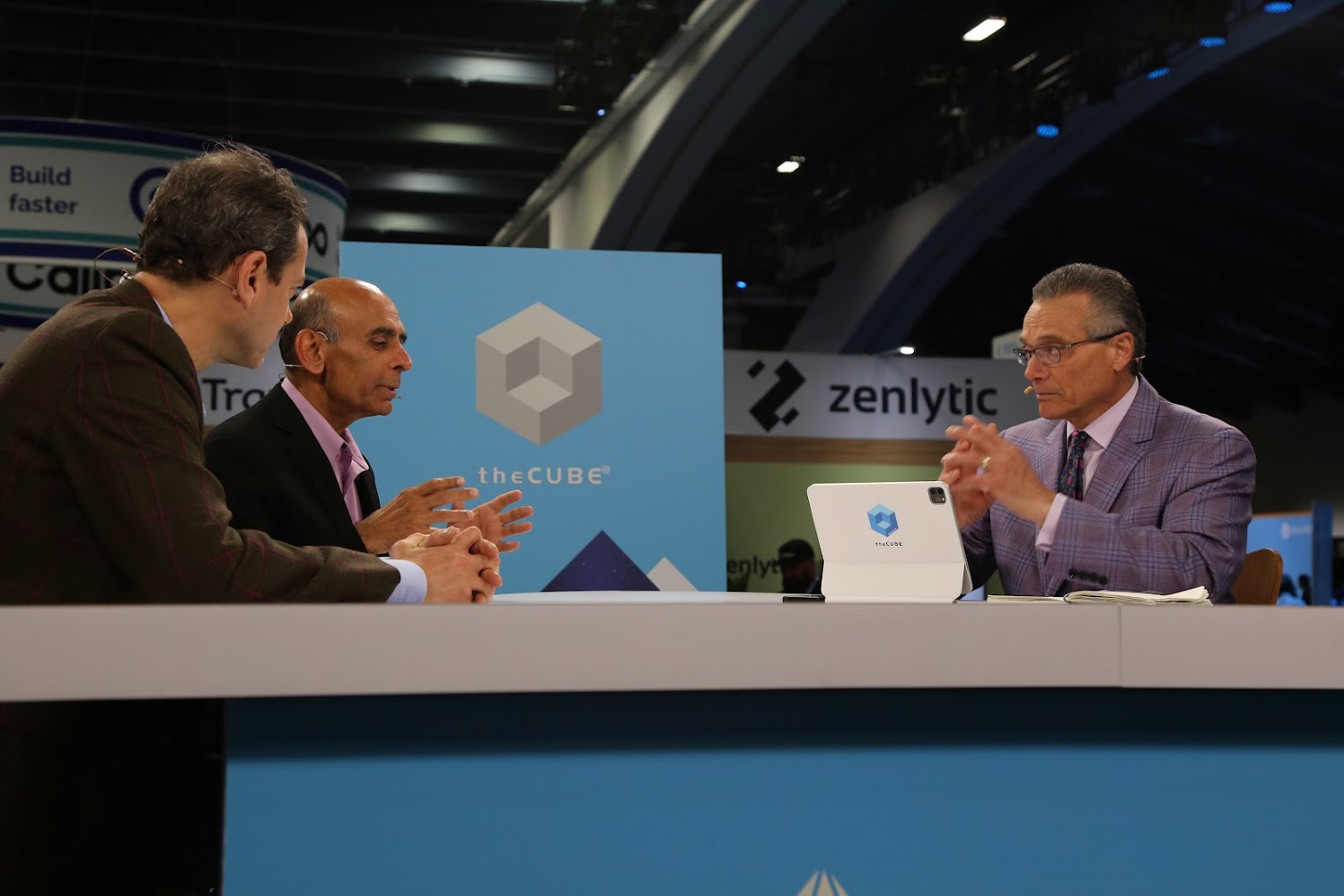 CLOUD
CLOUD
 CLOUD
CLOUD
 CLOUD
CLOUD
The Snowflake Data Cloud Summit in San Francisco last week offered an in-depth look at how artificial intelligence, data and open source are continuing to reshape the enterprise world.
As Snowflake Inc. moves from its Data Cloud into the AI Data Cloud, the company is seeking to write its next chapter under the leadership of new CEO Sridhar Ramaswamy, supporting an AI-driven environment where customers are demanding data simplicity and value for the business.
What this will mean for Snowflake as it navigates this latest transition was discussed at length by theCUBE, SiliconANGLE Media’s livestreaming studio, through interviews with company executives, customers and industry analysts at the Data Cloud Summit. (* Disclosure below.)

TheCUBE analysts discuss industry analysis about Snowflake’s strategy.
“On the topic of this crossroads/inflection point, there’s a couple of things going on that call for a wartime CEO, which is what Sridhar [Ramaswamy] is,” said George Gilbert, principal analyst at theCUBE Research, during a discussion on the conference’s opening day. “Simplicity comes from integration. But at the same time, there’s this countervailing force where customers are saying, ‘Data is the asset that drives all my applications, and I need to be able to get at that data without going through necessarily one engine.’”
Watch theCUBE’s complete analysis from George Gilbert, who was joined by fellow analysts Sanjeev Mohan, Dave Vellante and Rebecca Knight.
Here are four key insights you might have missed during the event:
Snowflake expanded its support for the Apache Iceberg open-source table format with the announcement of a vendor-neutral open catalog called Polaris. The move signaled Snowflake’s interest in providing table-based solutions to support flexibility and choice for customer data.

Sridhar Ramaswamy, CEO of Snowflake, talks with theCUBE’s Dave Vellante about the company’s evolving strategy.
“We think of ourselves as a cloud computing platform but centered on data,” said Snowflake’s chief executive Ramaswamy, in an exclusive interview with theCUBE. “We absolutely want to be the best platform that there is for storing data, for running data processing. That’s the core. That compute engine that is so magical, that’s the core of Snowflake, and we are expanding it … things like Iceberg, Polaris or Hybrid Tables, which is for transactional data, it expands that core.”
Watch theCUBE’s complete video interview with Sridhar Ramaswamy.
Snowflake’s announcement that it would open-source Polaris was accompanied by the news that an internal marketplace for the Horizon governance platform would begin private beta previews. Horizon allows users to curate data models and applications internally without exposing them to external view, an important companion piece to Polaris, according to Sanjeev Mohan, principal at SanjMo.
“Polaris … is a technical metadata catalog,” Mohan said, during a Data Cloud Summit analysis on theCUBE. “If you want to do [role-based access control], row-level security, column-level security … you need Horizon. If you don’t have a Horizon, then every single compute engine, if it’s Spark or Dremio or Trino or Starburst, they have to figure out how to apply data access governance onto Iceberg. That’s why Horizon is so important.”
Here’s theCUBE’s complete video interview with Sanjeev Mohan, who was joined by theCUBE’s George Gilbert:
Snowflake’s latest moves underscore the growing importance of Apache Iceberg for managing large amounts of data in analytic tables. This has given rise to vendor-specific service firms, such as Fivetran Inc., which is working with major healthcare provider Lyra Health Inc. to manage Iceberg administration.
“We now support loading [data] into Iceberg or into Delta, and the big difference is that we actually manage it all the way through,” said Taylor Brown, co-founder and chief operating officer of Fivetran, in an appearance on theCUBE. “You get the storage layer of a data warehouse within your own environment, your own cloud storage.”
Here’s theCUBE’s complete video interview with Taylor Brown, who was joined by Chris Suen, head of data at Lyra Health:
Simplicity was a key theme at Data Cloud Summit. Snowflake enhanced its Cortex AI offering to make it easier for users to analyze and build AI applications in the Snowflake Data Cloud.

Snowflake’s Vivek Raghunathan and Nvidia’s Kari Ann Briski discuss AI during Data Cloud Summit.
“Cortex is the idea that you have an offering that makes AI really easy for our customers to use,” said Vivek Raghunathan, member of the engineering organization at Snowflake, during an interview with theCUBE. “They can run it in production; it is safe and it is secure within their governance boundary.”
Watch theCUBE’s complete video interview with Vivek Raghunathan, who was joined by Kari Ann Briski, vice president of generative AI software and product management at Nvidia Corp.
Behind this drive for simplicity is also interest among customers in trust, having a level of confidence that models and applications running in Cortex respect access controls from legitimate data sources.
“What we’ve focused on to make the AI accessible is we focus on making it super easy, also very efficient and trusted,” said Baris Gultekin, AI product lead at Snowflake, in conversation with theCUBE. “Everything is built from the ground up from a trust perspective, all the access controls are respected. Then we’ve made this super simple to use.”
Here’s theCUBE’s complete video interview with Baris Gultekin, who was joined by Mukesh Dubey, product management and architecture lead of data and commercial platforms at Bayer U.S. LLC:
In addition to simplicity and trust, Snowflake is orchestrating its AI portfolio to help customers build new ways to transform business. At the online real estate platform Zillow Inc., this has helped fuel the company’s evolution from a search platform for listings to one where users can access a variety of real estate products and services.
“We used to be a search platform … we’re now more than search,” said Ravi Kandikonda, senior vice president of marketing at Zillow, during an appearance on theCUBE. “We want our customers to know that they can actually come onto the site and find a loan … find an agent and transact. All of that with AI is going to get easier and hopefully more effective especially when we are sending messages to customers.”
Here’s theCUBE’s complete video interview with Ravi Kandikonda, who was joined by Denise Persson, chief marketing officer of Snowflake:
Data Cloud Summit offered additional insight into how enterprises are using data and relying on Snowflake’s platform to provide key elements of support to run the business.
At the media measurement technology firm VideoAmp Inc., Snowflake delivers a platform to handle the vast amounts of data necessary for accurate content and ad measurement.

Jeff Hollan at Snowflake and John Adams at VideoAmp talk with theCUBE about data use cases.
“We leverage a lot of large data sets to go ahead and create something that’s actionable for our publishers and advertisers to transact upon,” said John Adams, vice president of architecture at VideoAmp, in a conversation with theCUBE. “They want to know who’s watching what, what those demographics are and they want to be able to trust the data.”
Watch theCUBE’s complete video interview with John Adams, who was joined by Jeff Hollan, head of developer tools at Snowflake.
For the global shoe retailer Foot Locker Inc., Snowflake is helping to revolutionize the company’s data management strategy by integrating the Data Cloud for an enhanced customer experience and AI-generated insights.
“We have around 2,600 stores; we’re a major retailer in footwear, but Snowflake is the backbone for us at Foot Locker,” said Anil Kumar Paila, principal architect at Foot Locker, during an interview on theCUBE. “Snowflake enabled us to move from passive data analytics to [using] data as a core asset to drive the business. At Foot Locker, Snowflake enables the data, it enables insights. Ultimately, it enables business, and that’s how we use it.”
Here’s theCUBE’s complete video interview with Anil Kumar Paila, who was joined by Rosemary DeAragon, global head of retail and travel at Snowflake:
At Black Entertainment Television LLC, or BET, predictive AI solutions have taken on increased importance in meeting the expectations of its viewers, according to Brian Rikuda, executive vice president of strategy, operations and programming scheduling at BET, during his appearance on theCUBE.
“We are looking at data in different ways than the industry has looked at data before to start predicting what customer behavior is going to look like,” Rikuda explained. “We have a range of subscribers that have certain consumption habits. But what we don’t know is what are the other types of content that we have in our service that they might want to get exposed to.”
Here’s theCUBE’s complete video interview with Brian Rikuda, who was joined by Vanja Josifovski, co-founder and chief executive officer of Kumo.ai Inc.:
Snowflake was one of the first enterprise tech companies to develop a multicloud strategy, what SiliconANGLE has described as a supercloud. Snowflake supports multiple data types, includes sophisticated analytics, can convert raw data into metrics with automatic updates, and has added generative AI through Cortex and fine-tuning models, all on one platform.
Snowflake’s success has been accompanied by significant disruption that has laid the groundwork for a sixth data platform in the evolution of computing, according to theCUBE analyst Dave Vellante.

Dave Vellante, theCUBE analyst, talks about Snowflake’s supercloud strategy at Data Cloud Summit.
“We use this term, the sixth data platform, so [there were] mainframes, then you had Oracle, you had enterprise data warehouse, you had Hadoop, and then Snowflake separated compute from storage, they put everything in the cloud, made it infinitely scalable and everything was integrated,” said Vellante, during an analysts’ discussion at the event. “But not any compute can access any data and we’re seeing a demand for that. Of course, the value proposition of Snowflake is ‘iPhone,’ all totally integrated. This is the nature of the disruption that we’re witnessing today.”
Snowflake’s release of Polaris as a vendor-neutral, open catalog implementation for Iceberg and other data architectures, further enhanced the company’s supercloud platform. By creating an abstraction so that all users can read and write to the data table, Snowflake is unbundling a major process for technical metadata.
“When you write to that table, that’s the technical metadata,” said theCUBE’s Gilbert, during an analyst roundtable discussion. “What I found out today was the reason why Polaris was open-sourced is so that for Iceberg tables you can read and write independent of a catalog. In Unity, which is trying to have Delta and Iceberg and Hudi support, they have not only the technical metadata, but all the other, the lineage, the permissions, all the things that are in Horizon, but they’re bundling it. If you wanted to read and write to the open table formats, you had to take the entire Databricks catalog. Now by getting everyone to agree that Polaris or some other catalog is enough, they can then break that link, they can break that bundle.”
Nonetheless, the open sourcing of Polaris still does not solve all of the gaps that exist today with AI functionality, according to Sanjeev Mohan, principal at SanjMo, during the analysts’ discussion.
“There’s still a lot of building blocks that do not exist in this story,” Mohan said. “We don’t have a good story from Snowflake about semantic layer, and you need that semantic layer. If you’re going to do a natural language query to your data, how do you know? We don’t have a common standard. The moat is functionality, it’s the integrated nature of the stack.”
Here’s theCUBE’s complete video analysis from George Gilbert, Sanjeev Mohan and Dave Vellante:
To watch more of theCUBE’s coverage of Data Cloud Summit 2024, here’s our complete event video playlist:
(* Disclosure: TheCUBE is a paid media partner for Data Cloud Summit. Neither Snowflake, the sponsor of theCUBE’s event coverage, nor other sponsors have editorial control over content on theCUBE or SiliconANGLE.)
THANK YOU